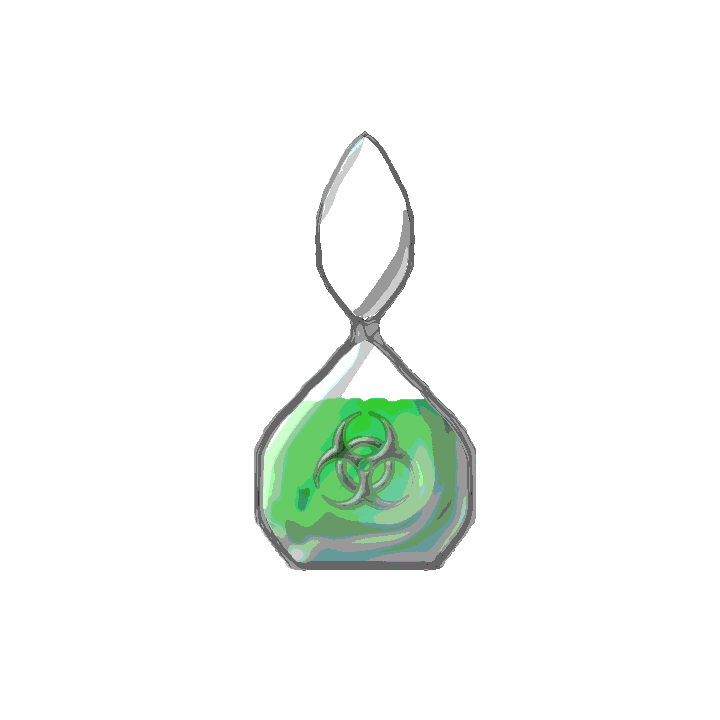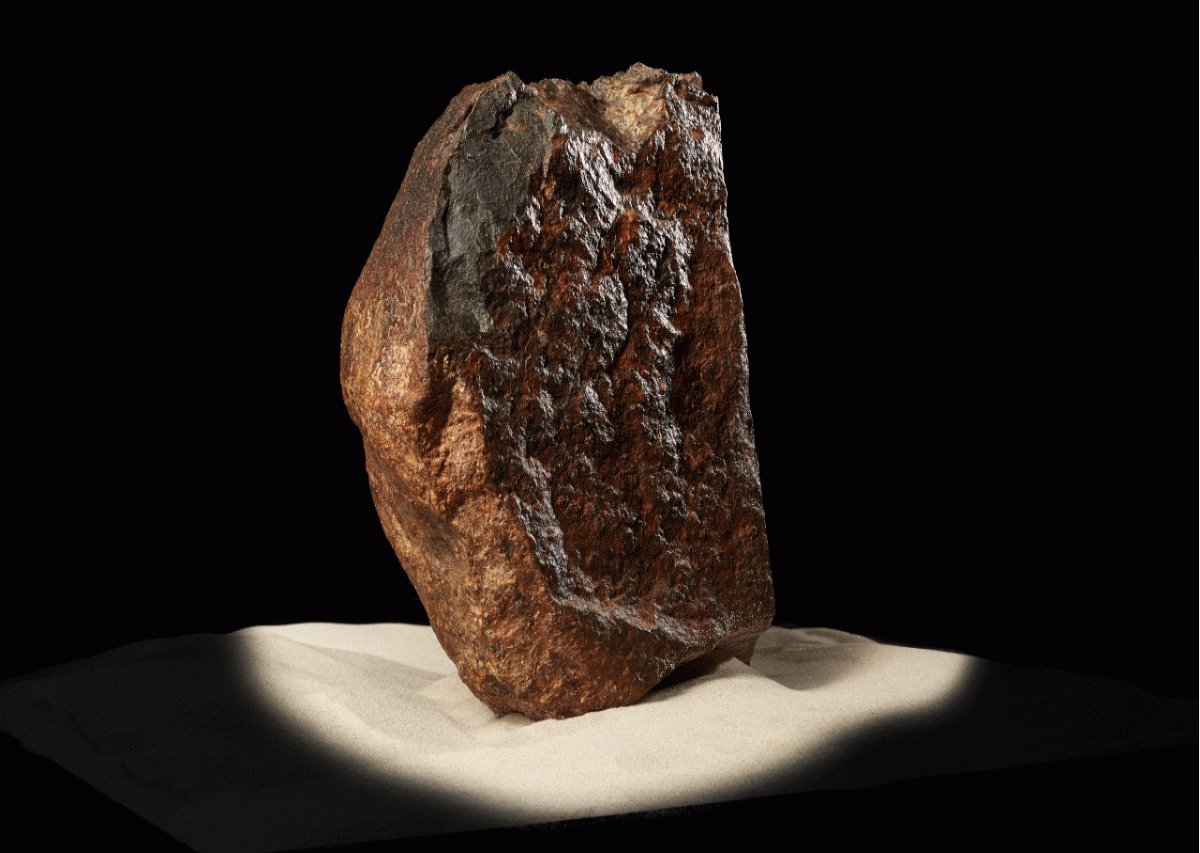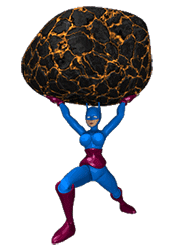



Aeschylus was born in the city of Eleusis, near Athens, in 525 BC and died in 456 BC. He was a Greek dramatist, the earliest of the city's great tragic poets. As the predecessor of Sophocles and Euripides, he is the founder of Greek tragedy. He fought successfully against the Persians at Marathon in 490 BC, at Salamis in 480 BC, and possibly at Plataea in the following year. He made at least two trips, perhaps three, to Sicily, where on his final visit he died at Gela. A monument was later erected there in his memory. It was a major step for drama when Aeschylus introduced the second actor. He also attempted to involve the chorus directly in the action of the play. Aeschylus is said to have written about 90 plays. His tragedies, first performed about 500 BC, were presented as trilogies, or groups of three, usually bound together by a common theme, and each trilogy was followed by a satyr drama (low comedy involving a mythological hero, with a chorus of satyrs). The titles of 79 of his plays are known, but only 7 have survived. As a youth, he worked at a vineyard until, according to the 2nd-century AD geographer Pausanias, the god Dionysus visited him in his sleep and commanded him to turn his attention to the nascent art of tragedy. As soon as he woke from the dream, the young Aeschylus began to write a tragedy, and his first performance took place in 499 BC, when he was only 26 years old. He won his first victory at the City Dionysia in 484 BC.

Aeschylus was one of many Greeks who were initiated into the Eleusinian Mysteries, an ancient cult of Demeter based in his home town of Eleusis. Initiates gained secret knowledge through these rites, likely concerning the afterlife. Firm details of specific rites are sparse, as members were sworn under the penalty of death not to reveal anything about the Mysteries to non-initiates. Nevertheless, according to Aristotle, Aeschylus was accused of revealing some of the cult's secrets on stage. In 458 BC, he returned to Sicily for the last time, visiting the city of Gela where he died in 456 or 455 BC. Valerius Maximus wrote that he was killed outside the city by a tortoise dropped by an Eagle (possibly a lammergeier or Cinereous vulture, which do feed on tortoises by dropping them on hard objects) which had mistaken his bald head for a rock suitable for shattering the shell of the reptile. Aeschylus's work was so respected by the Athenians that after his death, his were the only tragedies allowed to be restaged in subsequent competitions. His sons Euphorion and Euæon and his nephew Philocles also became playwrights. Ironically Aeschylus received a prophecy that he would be killed by a falling object so was staying outside where he thought he would be safe. (Such is life)



Empedocles lived 2500 years ago, soon after the dawn of scientific thought in Ancient Greece.
In his remarkable life Empedocles devised a theory of natural selection; proposed that everything in existence is made of different combinations of four elements: air, fire, wind and earth; recognized that air has weight; said that the speed of light is finite; and made a statement equivalent to the modern law that mass is conserved in chemical reactions. Empedocles was also a poet and philospher with outstanding ability and has been regarded variously as a materialist physicist, a shamanic magician, a mystical theologian, a healer, a democratic politician, a living god, and a fraud. Empedocles was born at Acragas in Sicily around 492 B.C.E. and died at the age of sixty. He was the son of a certain Meton, and was from an important and wealthy local aristocratic family: He also considered the slaughter of animals and the practice of consuming the flesh of animals a terrible sin, He would definitely have supported veganism in his day and considered meat eating barbaric and canabalistic.

Legend has it that Empedocles died by suicide and threw himself into the caldera of Mount Etna in Sicily in a bid to make people believe his body had vanished and he had turned into an immortal god. The volcano however threw back one of his bronze sandals revealing his deceit.



Qin Shi Huang born around 259 BCE–September 10, 210 BCE) was the First Emperor of a unified China and founder of the Qin dynasty, who ruled from 246 BCE to 210 BCE. In his 35-year reign, he caused both rapid cultural and intellectual advancement and much destruction and oppression within China. He is famed for creating magnificent and enormous construction projects, including the beginnings of the Great Wall of China. Huang had a huge family consisting of 50 children and had a deep fear of death which might explain why he had so many offspring. Huang desperately sought the fabled elixir of life which would supposedly allow him to live forever. He was obsessed with acquiring immortality and fell prey to many who offered him supposed elixirs. He visited Zhifu Island three times in order to achieve immortality.

In one case he sent Xu Fu, a Zhifu islander, with ships carrying hundreds of young men and women in search of the mystical Penglai mountain. These many men and woman were sent to find a secretive and very mystical magician called Anqi Sheng. Sheng was at least 1000 years old and very wise and had already met Huang at some stage of the emperors travels. Some time passed but these very men and woman never returned back to Huang because they knew that if they never brought back the promised elixir they would surely be executed for failure, Japan could well be made up of the emperors slaves as they colonized Japan tearing all ties with there master. Book burning was abundant if the pages proved no significant truth or guarantee, Scholars of alchemy were frequently executed as they were unable to offer any evidence of there supernatural powers, Huang knew that these magicians would be able to bring themselves back from the dead and if they did this would prove there authenticity, Huang himself was so afraid of evil spirits and death he had his workers dig a series of tunnels underneath his many palaces which at the time was over 200 abodes, by travelling unseen he would be safe.





Image Above - Detail of Mount Penglai (Mountain of Immortals), 1924 by Tessai Tomioka - In 211 BC a large meteorite from outer space fell quickly to the ground in Dōngjùn (東郡) in the lower reaches of the Yellow River. The rock had an inscription ascribed into the object which read "The First Emperor will die and his land will be divided" (始皇死而地分). The Emperor heard about the meteorite and immediately sent an imperial secretary to investigate this prophecy. Not a single person would confess to inscribing the space rock so in frustration and anger Huang had all his faithful people who lived near him executed without mercy, the meteorite was then burned and pulverized to destroy the outcome, Later on during the emperors fourth tour of Eastern China he became very ill after he arrived in Pingyuanjin, he could not be saved and died on 10th September 210 BC at the palace in Shaqiu prefecture (沙丘平台, Shāqiū Píngtái), Huang was still at least two months away by road from the capital Xianyang and would of been carried by Litter vehicle. The cause of Qin Shi Huang's death is still largely unknown, reportedly, he died from Chinese alchemist elixir poisoning due to ingesting mercury pills made by his many alchemists and court physicians who promised there Emperor eternal life and immortality.





Draco Greek Δράκων, Drakōn; fl. c. 7th century BCE), was also called Drako or Drakon, was the first recorded legislator of Athens in Ancient Greece. He replaced the prevailing system of oral law and blood fued by a written code to be enforced only by a court of law. Draco was the first democratic legislator, requested by the Athenian citizens to be a lawgiver for the city-state. Draco was secretive and did not communicate with his citizens who were unaware that he had planned a destructive and very harsh set of rules and judgments. The word Draconian comes from the latter and means terrible mean and unfair. During the 39th Olympiad in 622 or 621 BCE, Draco established the legal code with which he is identified. In his bid to stop his loyal citizens from finding out what laws they should follow he had them posted on wooden tablets (ἄξονες - axones), where they were preserved for almost two centuries on steles (wooden slab) of the shape of three sided pyramids (κύρβεις - kyrbeis). The tablets were called axones, perhaps because they could be pivoted along the pyramid's axis to read any side.

Image Left - Ancient Greek law code - If a citizen was dyslexic unable to read and write they would not be able to understand the laws and would have to rely on someone else to tell them, Here is a small selection of laws,
Political rights (in Athens) can only belong to those that carry weapons. These rights are especially for lower rank lords whereas in order for someone to be elected as a general or head of cavalry (ίππαρχος, ipparxos) he should have a fortune of over 100 mnes and have a legitimate Athenian wife and children over 10 years old.
He who kills another Athenian, without a purpose or by accident should be banished from Athens for ever. If the killer apologizes to the family of the murdered man and the family accepts the apology, then the murderer may stay in Athens.
A relative of a murder victim, can hunt and take into custody the murderer and thus hand him to the authorities where he will be judged. If a relative kills the murderer he will not be allowed to enter the Athenian Forum («αγορά»,agora), or participate in competitions or set foot into sacred places...Draco’s law code was later regarded as intolerably harsh, especially in regards to punishing trivial crimes with death.


Any debtor whose status was lower than that of his creditor would have to become a slave and could work for his debtor, But if a rich citizen owed money to a lower and poorer person it was more lenient, stealing a food item fruit vegetable bread etc normally resulted in execution. "It is said that Drakon himself, when asked why he had fixed the punishment of death for most offences, answered that he considered these lesser crimes to deserve it, and he had no greater punishment for more important ones" All his laws were repealed by Solon in the early 6th century BCE, with the exception of the homicide law. After much debate, the Athenians decided to revise the laws, including the homicide law, in 409 BC. Even with his draconian laws he was respected by his people, In 590 B.C., a testimonial was to be held in his honor. The custom at the time, to show respect, was to throw one’s cloak or hat at the honored person. However, there were so many people in attendance, that he was smothered by a pile of linen….literally. “By the time he was rescued from beneath the enormous pile of discarded garments,” “Draco had suffocated to death.” The people believed in his laws and executed there love and faith onto him which Draco had in his blood.




Image Left - Vizkelety Portrait of Béla I og Hungary 1863 - Béla I the Champion or the Wisent 1015 – 11 September 1063) was King of Hungary from 1060 up until his death. He descended from a younger branch of the Arpad dynasty, he left Hungary in 1031 together with his brothers, Levente and Andrew after the execution of his their father. Bela settled in Poland and married Richeza daughter of King Mieszko II of Poland. He returned to his homeland upon the invitation of his brother Andrew, who had in the meantime been crowned King of Hungary. Andrew assigned the administration of the so-called ducatus which encompassed around one-third of the territory of the Kingdom of Hungary to Bela. The two brothers' relationship became tense when Andrew had his own son called Solomon crowned king, this put pressure on Bela who was forced to publicly confirm Solomon's right to the throne in 1057 or 1058. Béla, assisted by his Polish relatives rebelled against his brother and dethroned him in 1060. He introduced monetary reform and subdued the last uprising aimed at the restoration of paganism in Hungary. Béla was fatally injured when his throne collapsed while he was sitting on it at his manor retreat at Domos, this untimely and unexpected accident sent his three sons Geza, Ladislaus and Lampert back to the refuge of Poland while Solomon ascended the throne.


Arms of George Plantagenet, Duke of Clarence: Royal arms differenced by a label of three points argent each charged with a canton gules.

George, Duke of Clarence , younger son of Richard, Duke of York, by his wife Cicely, daughter of Ralph Neville, 1st Earl of Westmorland, was born in Dublin on the 21st of October 1449. Soon after his elder brother became king as Edward IV in March 1461, he was created duke of Clarence, and his youth was no bar to his appointment as lord-lieutenant of Ireland in the following year. Having been mentioned as a possible husband for Mary, daughter of Charles the Bold, afterwards Duke of Burgundy, Clarence came under the influence of Richard Neville, Earl of Warwick, and in July 1469 was married at Calais to the earl's elder daughter Isabella. With his father-in-law he then acted in a disloyal manner towards the king. Both supported the rebels in the north of England, and when their treachery was discovered Clarence was deprived of his office as lord-lieutenant and fled to France.

Image Above - Edward IV Born 28 April 1442 – Died 9 April 1483) Reined from 1461-1470 and again from 1471-1483. Returning to England with Warwick in September 1470, he witnessed the restoration of Henry VI, when the crown was settled upon himself in case the male line of Henry's family became extinct. The good understanding, however, between Warwick and his son-in-law was not lasting, and Clarence was soon secretly reconciled with Edward IV. The public reconciliation between the brothers took place when the king was besieging Warwick in Coventry, and Clarence then fought for the Yorkists at Barnet and Tewkesbury. After Warwick's death in April 1471 Clarence appears to have seized the whole of the vast estates of the earl, and in March 1472 was created by right of his wife Earl of Warwick and Salisbury.

He was consequently greatly disturbed when he heard that his younger brother Richard, Duke of Gloucester, was seeking to marry Warwick's younger daughter Anne, and was claiming some part of Warwick's lands. A violent quarrel between the brothers ensued, but Clarence was unable to prevent Gloucester from marrying, and in 1474 the king interfered to settle the dispute, dividing the estates between his brothers. Isabel died on 22 December 1476, two months after giving birth to a short-lived son named Richard (5 October 1476 – 1 January 1477). In 1477 Clarence was again a suitor for the hand of Mary, who had just become duchess of Burgundy. Edward IV objected to the match, and Clarence, jealous of Gloucester's influence, left the court.

Image Left - King Richard III, Duke of Gloucester, in portrait and remains.
At length Edward was convinced that Clarence was aiming at his throne. The duke was thrown into prison, and in January 1478 the king unfolded the charges against his brother to the parliament. He had slandered the king; had received oaths of allegiance to himself and his heirs; had prepared for a new rebellion; and was in short incorrigible. Both Houses of Parliament passed the bill of attainder, and the sentence of death which followed was carried out on the 17th or 18th of February 1478. It is uncertain what share Gloucester had in his brother's death; but soon after the event the rumour gained ground that Clarence had been drowned in a butt of malmsey wine. Two of the duke's children survived their father: Margaret, countess of Salisbury, (1473-1541), and Edward, earl of Warwick (1475-1499), who passed the greater part of his life in prison and was beheaded in November 1499.




Hans Staininger, the Mayor of Braunau (a city in Austria, back then Bavaria), died in 1567 when he broke his neck by tripping over his own beard. There was a fire at the town hall, where he slept, and while he tried to escape he fell over his own beard. The beard was 1.4m (three and a half "Ellen", a measure unit then) long and was usually rolled up in a leather pouch. This beard is now stored in a local museum.





Adolf Frederick was a Swedish king who lived during the 18 th century. Although Adolf Frederick ruled Sweden for almost 20 years, it was unremarkable and nothing of great note took place during his long reign. Instead, Adolf Frederick’s (dubious) claim to fame lies in the manner of his death. The Swedish monarch is often nicknamed ‘the king who ate himself to death’, as he is reported to have died after overeating. Adolf Frederick was born on the 14 th of May 1710, in Gottorp, Schleswig, Germany. His father was Christian Augustus of Holstein-Gottorp-Eutin, who belonged to the House of Holstein-Gottorp, while his mother was Albertina Frederica of Baden-Durlach. As a younger son, Christian Augustus did not inherit the Duchy of Holstein-Gottorp, which went to his older brother, Frederick IV. Christian Augustus was given the fiefdom of Eutin, as well as the Prince-Bishopric of Lübeck.

Elizabeth - Empress of Russia
Adolf Frederick himself was a younger son and was probably not expected to inherit his father’s titles. Indeed, when Christian Augustus died in 1726, he was succeeded by Charles Augustus, his eldest son. Charles Augustus died in the following year, and as he was childless, was succeeded by Adolf Frederick. Adolf Frederick would have remained a minor German noble, had it not been for Elizabeth, the Empress of Russia. During the Russo–Swedish War, which lasted from 1741 to 1743, the Swedes were defeated by the Russians and were forced to sign the Treaty of Åbo. One of the major causes of the war was Sweden’s desire to re-take Finland, which was occupied by Russia following the Great Northern War. Threatening to annex Finland, Elizabeth was able to force the Swedes to elect Adolf Frederick as the heir to the Swedish throne.

1750 Queen Lovisa Ulrika by Gustav L. Lundberg (Royal Armoury, Skokloster Castle and The Hallwyl Museum - Stockholm Sweden)
When the Swedish king, Frederick I, died in 1751, Adolf Frederick became the new king. He was, however, only a figurehead, as real power was concentrated in the hands of the Riksdag (the Swedish Parliament). Adolf Frederick was not content with this state of affairs, and on two occasions, the king tried to seize power from the Riksdag. His first attempt, known as the Coup of 1756, was masterminded by the queen, Louisa Ulrika (the sister of Prussia's Frederick the Great). The conspirators planned to abolish the Riksdag and install Adolf Frederick as an absolute monarch. The plot, however, was discovered. As a consequence, several confidants of the royal family were executed, and Adolf Frederick nearly lost the throne himself.
The second opportunity to seize power came in 1768. In the so-called December Crisis, Adolf Frederick decided against signing certain state documents and formally resigned as king, making use of what little power he had. With the guidance of his son, Gustav (who later became King of Sweden as Gustav III), the king succeeded in scoring a small victory. In order to avert the crisis, the Riksdag assembled on the 20 th of December 1768 and promised to institute reforms that would increase the king’s powers. The king agreed to retake the throne, therefore bringing the crisis to an end. The Riksdag assembled again during the following year and the only reform that was made was to increase the king’s income. The king’s actions, however, caused the Cap party (which was generally pro-Russian and pro-Prussian) to lose power in the Riksdag and brought their rival, the Hats party (which was pro-French, and pursued a more aggressive foreign policy), back to power.

Image Above - Every year, Sweden has its national Fat Tuesday. It is a day before Ash Wednesday and has it's a tradition of eating buns called "Semla" - Adolf Frederick died on the 12 th of February 1771, at the age of 60. The day of his death was Fettisdagen (literally meaning ‘Fat Tuesday’), the Swedish equivalent of Shrove Tuesday. As the following day would have been the beginning of Lent, the king had a huge meal the night before. It is reported that the king feasted on lobsters, caviar, sauerkraut, kippers, and champagne. Additionally, the king devoured 14 servings of semla, a sweet roll filled with cream traditionally eaten in Sweden on Fettisdagen. Adolf Frederick died shortly after this sumptuous last meal and it is often thought that it was the dessert that caused his death.








January 11, 1854
San Francisco, California
William Snyder, a 13-year-old, either dies or is buried after an unfortunate accident after “being swung by his heels by a circus clown.” William died after being accidentally dropped on his head. Another source, from the Sacramento Daily Union, January 13, 1854, mentions another death of a 13-year-old who died of a pumanary rupture. Though the name of the child is listed as William Bernard rather than William Snyder, it can be assumed they were the same person.



Henry Taylor, Pallbearer, killed by a coffin 1872, Kensal Green Cemetery (9 November 1872)
"KILLED BY COFFIN. Dr. Lancaster held an inquest Saturday evening at the University College Hospital, London, on the body Henry Taylor, aged 60. The evidence of E. J. Heading, undertaker's foreman, and others showed that on the 19th inst. deceased, with others, was engaged at a funeral Kensal-Green Cemetery. The Church service having been finished, the coffin and mourners proceeded in coaches towards the place of burial. The day being damp, the foreman directed the coaches with the mourners to proceed to the grave by the foot-way, and the hearse across the grass towards a grave-digger, who was motioning the nearest way. The coffin was moved from the hearse and being carried down a path only three feet six wide, by six bearers, when orders were given to turn, so that the coffin, which was what is known in the trade as a four pound leaden one, should head first. While the men were changing, it is supposed that deceased caught his foot against a side stone and stumbled ; the other bearers, to save themselves, let the coffin go, and it fell with great force on to deceased, fracturing his jaws and ribs. The greatest confusion was created among the mourners who witnessed the accident, and the widow of the person about to be buried nearly went into hysterics. Further assistance having been procured the burial service was proceeded with, while deceased was conveyed to a surgery, and ultimately to the above mentioned hospital, where he expired on the 24th inst. The jury recommended that straps should be placed round coffins, which would tend to prevent such accidents. Verdict—accidental death. "
_p4_549_ISAAC_BUTT_M.jpg)


Sir William Payne-Gallwey, 2nd Baronet (1807 - 19 December 1881) was an English Conservative Party politician who sat in the House of Commons from 1851 to 1880. Payne-Gallwey was the son of Sir William Payne-Gallwey, 1st Baronet and his wife Harriet Quin, daughter of the 1st Earl of Dunraven. His father was a British army general and Governor of the Leeward Islands. Payne-Gallwey was a major in the 7th Fusiliers and succeeded his father in the baronetcy in 1831. He was a Deputy Lieutenant and J.P. for the North Riding of Yorkshire. At a by-election in March 1851, Payne-Gallwey was elected unopposed as the Member of Parliament (MP) for Thirsk. He was re-elected without a contest in the next four general elections, and in contested elections in 1868 and 1874. He held the seat until he stood down at the 1880 general election.Payne-Gallwey died at the age of 74, as a result of severe internal injuries sustained after falling upon a turnip while out shooting in the parish of Bagby. Payne-Gallwey married Emily Anne Russell, daughter of Sir Robert Frankland Russell, 7th Baronet in 1847, They had four sons and three daughters, He was succeeded by his eldest son, Ralph.
.png)


She went by Big Mary. For years, Mary worked for the Sparks World Famous Shows traveling circus, where she entertained towns from coast to coast. That all came to a crashing halt in 1916, when the town of Erwin, Tennessee arrested Mary for murder and hanged her from a crane in front of a crowd of spectators. Mary’s story is as sad as it is bizarre. While time has clouded the exact details of her life, a few things remain certain: the female circus elephant killed the man who beat her with a hook, and a small town in Tennessee formed a mob, lynching her in a public execution as grisly as it is unbelievable.

Image Above - Mary - as a baby in Sparks Circus - Mary’s story begins in the late 19th century with a man named Charlie Sparks, Sparks was a circus performer since the age of eight. Sparks would go on to own the Sparks World Famous Shows, a traveling circus featuring clowns, acrobats, lions and other exotic animals such as elephants, which included Mary. Sparks’ father purchased Mary when she was four years old, and Charlie and his wife, Addie Mitchell, would go on to raise her, treating the elephant like the child they never bore. Her nickname, “Big Mary,” came well-earned. Touted as "The Largest Living Land Animal On Earth" the five-ton Asian elephant stood taller than the popular Barnum & Bailey’s star, Jumbo, hovering over him by a supposed three inches.


Playing musical instruments, standing on her head, and even catching baseballs, this gentle giant awed crowds all over the country. Mary was without a doubt the company’s star attraction, drawing many spectators to Sparks’ shows for years. Mary’s future would find an expiration date, however, when the circus made its way to Virginia. Upon Sparks’ arrival, a hotel worker named Walter “Red” Eldridge inquired about a job working with the show’s elephants. Despite his lack of experience, the circus hired Eldridge as an under keeper, which held him responsible for the elephants’ basic maintenance, such as feeding and watering them. Circus employees trained Eldridge to handle his herd with the “gentle care” that Sparks insisted of his handlers. Eldridge would lose sight of this philosophy at the first elephant indiscretion, which resulted in one of the most cruel and barbaric cases of animal torture ever recorded.
Admittedly missing a few key details, the most popular telling of the tale involves Eldridge, a bull hook, and a piece of watermelon. Leading the elephants to a nearby watering hole while preparing for a show in Kingsport, Tennessee, Eldridge sat atop Mary, nudging her forward with his bull hook. When the star performer stopped abruptly to reach for a discarded watermelon rind on the side of the road, Eldridge went against orders and began smacking her with his makeshift whip, digging its hooks deep into her flesh. Mary snapped. Reaching behind with her trunk, some reports say Mary grabbed Eldridge, lifted him up into the air, and slammed his body onto the ground before using her massive foot to crush his head, killing him instantly.

Image Above - Walter “Red” Eldridge's Death Certificate - Others claim that the elephant went on to impale the man with her tusks, while still others state that she merely whipped him in the head with her trunk, landing the fatal blow that killed him. In spite of the competing stories, one thing is for certain: the town of Kingsport sought justice for Eldridge’s death. When several shots from a spectator’s gun failed to subdue Mary, the crowd only became angrier, eventually chanting “Kill the elephant,” before chaining her outside of the county jail, where more onlookers gathered to witness the great “Murderous Mary,” as she was now known. News of the killing spread fast. The Sparks clan had a show in nearby Erwin later that evening, but the town forbade the circus from entering so long as they had Mary in tow. With a crowd headed to Kingsport to kill his beloved pachyderm, Sparks had to make a tough decision.

Image Above - Unicoi County, Tennessee 1888 Map Erwin, Loganton, Indian Creek, Rose Hill, Flagpond, Unaka Spring, Briggs, Clear Branch, TN - Despite the close emotional bond the two had shared for years, Sparks severed the relationship in a way that would at least save his business’ life: he staged a public execution.
This decision then left Sparks with the difficult task of figuring out how best to execute a 10,000-pound animal. Bullets had already proved fruitless, leading some people to suggest crushing Mary between two trains. Others pushed for a more macabre approach of tying her front and back legs to two trains running in opposite directions, dismembering her alive. As rural Tennessee lacked enough power to electrocute the beast, Sparks decided to hang Mary, which would satisfy both the need to kill her and the bloodlust driving the town to pandemonium.

This incredible photo shows Big Mary being hanged by the neck, A very sad day for the travelling circus family and a huge mistake made by Charlie Sparks for the sake of his circus business. It was a foggy and rainy September 13, 1916, Mary was transported by rail to Unicoi County, Tennessee The next day, Sparks World Famous Shows entered the town of Erwin, ready to hang their star pupil from a 100-ton crane located on the railroad tracks. Followed by four other elephants, walking trunk-to-tail as they did in countless shows, Mary entered the “gallows,” where circus employees fitted a chain around her neck at around four or five o'clock. The chain, which was attached to a crane, would hoist her into the air. As with the bullets, the first chain failed to work on Mary. After lifting her five feet, the chain snapped, sending the elephant falling to the ground and breaking her hip in the process. This caused young children from within the crowd to scream and run away from the injured Mary, Many of the 2500 strong crowd consisted of children from the local town who were assembled in the Clinchfield Railroad yard, Circus employees wrapped a second chain around her as she lie in pain, and lifted her once more, where she shrieked and thrashed about until going limp. After suspended in the air for 30 minutes, a veterinarian declared her dead and employees lowered Mary to the ground.

A remaining elephant who had worked with Mary for years escaped his pen later that night, running toward the railway yard where Mary took her last, pained breaths. This elephant, too, was captured, and returned to the circus which killed his companion. A veterinarian examined Mary after the hanging and determined that she had a severely infected tooth in the precise spot where Red Eldridge had prodded her.

Mary Hardy Reeser
On July 2nd, 1951, at about 8:00 AM in St. Petersburg, Florida, Mrs. Reeser's landlady came to give a Mrs. Mary Reeser a telegram and some coffee, when she found that the metal doorknob was hot to the touch. After enlisting the help of some carpenters working nearby, she eventually forced the door open. Inside, they found the cremated remains of Mrs. Reeser. Most of her body was in ashes, the only surviving parts being her backbone and left foot (still with a slipper on it). Her skull was also found, shrunken to "the size of a teacup," with all facial features removed.

After calling the police, an investigation was launched by the local police chief, J.R. Reichert. The investigation found that, although Reeser's body was totally cremated, the rest of the room was largely unaffected. Only a few appliances had been melted and made soft due to the heat. A socket had also melted, stopping a clock at 2:26 AM. The police were baffled that a fire that caused so much damage to Mrs. Reeser (the temperature was estimated at 3000 degrees Fahrenheit) could leave the rest of the house, indeed much of the room intact. During the investigation, Reichert sent FBI director J. Edgar Hoover to take several items from the crime scene, including glass fragments found in the ashes, small, charred pieces of teeth, some carpet, and the slipper. In response, Hoover sent a team of FBI investigators and physical anthropologist Wilton Krogman, as well as notifying President Harry S. Truman.


Mary Hardy Reeser's burnt remains continue to baffle scientists and could be the result of internal combustion and phenomena when people suddenly burn up to ash.





Image Left- Physical anthropologist Wilton Krogman

Image Left - 1952 St. Petersburg Florida Police Chief Reichert & Pistol Team Press Photo - Historic Images
After weeks of investigation, the FBI declared that Reeser had died due to the wick effect. As a known user of sleeping pills, they concluded that she had fallen asleep while smoking, and set fire to her nightgown. They reasoned that the human body has enough fat and other inflammable substances for the body to be set alight, like a candle. This would therefore allow large amounts of destruction. However, both Reichart and Krogman disagreed on the conclusion made by the FBI. Krogman remarked that "I find it hard to believe that a human body, once ignited, will literally consume itself -- burn itself out, as does a candle wick, guttering in the last residual pool of melted wax. "Just what did happen on the night of July 1st, 1951, in St. Petersburg, Florida?

President Harry S. Truman plays ten pin bowling.







FBI director J. Edgar Hoover



"We may never know, though this case still haunts me," and, on the shrunken skull, he wrote "[...]The head is not left complete in ordinary burning cases. Certainly it does not shrivel or symmetrically reduce to a smaller size. In presence of heat sufficient to destroy soft tissues, the skull would literally explode in many pieces. I have never known any exception to this rule." After finally concluding that "I cannot conceive of such complete cremation without more burning of the apartment itself. In fact the apartment and everything in it should have been consumed. [...] I regard it as the most amazing thing I have ever seen. As I review it, the short hairs on my neck bristle with vague fear. Were I living in the Middle Ages, I'd mutter something about black magic." Krogman then put forward the idea that Reeser was murdered with crematorium equipment, but with no explanation for the melted appliances. We may never know who or what caused Mary Reeser to ignite in her armchair, on July 2, 1951, at 2:26 a.m. Whether you believe in the paranormal or in spontaneous human combustion, the case does tell us this: "Perhaps truth can be stranger than fiction."






